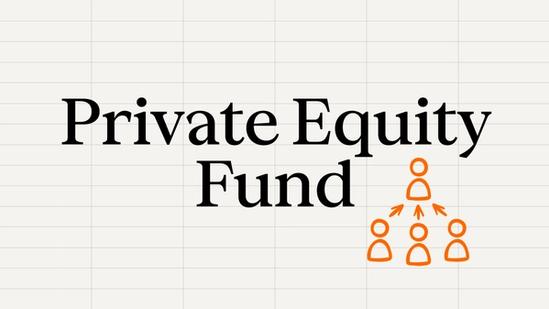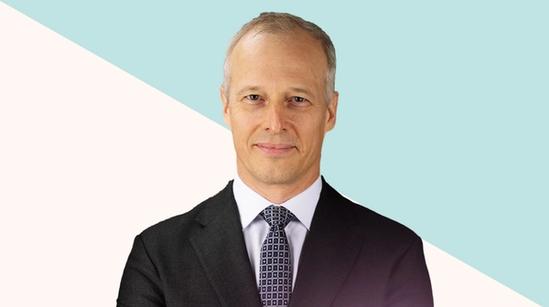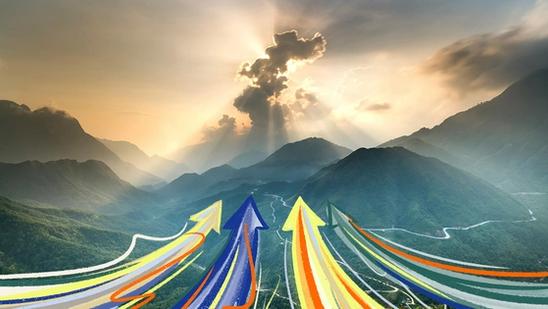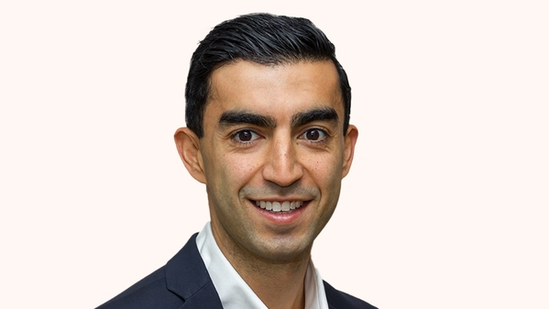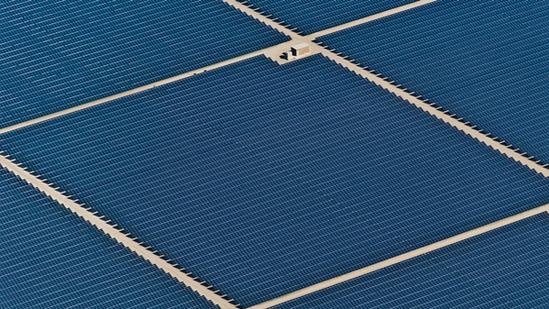Podcast – Ep.2 Simon Henzell-Thomas, Director of Climate and Nature at Ingka Group (IKEA)


At COP29, Bahare Haghshenas, EQT's Global Head of Sustainable Transformation spoke with Simon Henzell-Thomas, Director of Climate and Nature at Ingka Group (IKEA). Scroll to the bottom of this article to watch the full episode.
Bahare Haghshenas: Hi Simon, great to have you here.
Simon Henzell-Thomas: Hi Bahare, nice to be with you.
Bahare Haghshenas: How has your COP been so far?
Simon Henzell-Thomas: It’s been really busy. It’s really vibrant. It’s my fourth COP now, and before we came here, everyone was saying it would be quiet and that not many people would be in Baku. But Baku’s been super busy, with lots of good diversity in who’s here.
I’ve noticed NGOs, protests every morning, a very big business community, and governments everywhere. You see lots of negotiators busy negotiating for the deal.
Bahare Haghshenas: Before we jump into the topic, I’m really curious, you’ve been working as a sustainability leader on climate for many, many years. What is your main driver?
Simon Henzell-Thomas: I used to work for NGOs, and I realized that while I really valued the work we did, it felt quite small in terms of impact.
Then, I realized that working for a business can have an amazing impact. Think of the value chains and the volumes of materials businesses like IKEA source, like wood and other materials. I thought, “If I work for a business, I could have more impact.”
I’ve been doing this now for 17 years. I used to work for The Body Shop and L’Oréal, and now for IKEA.
What makes me tick is the potential impact the business community can have on these topics. Policymakers are really interested in understanding what businesses think and where we’re moving in the future so they can create policies that help businesses, society, the planet, and people.
Bahare Haghshenas: Yesterday, you launched some exciting news in Ingka Group. Tell me more about it.
Simon Henzell-Thomas: We’ve got science-based targets in Ingka and IKEA, which we signed off this year. This means we’ll reduce our carbon footprint by 50 percent by 2030 across all scopes Scope 1, 2, and 3. And we’ll be net zero by 2050.
Bahare Haghshenas: Congratulations.
Simon Henzell-Thomas: Thank you. But the hard work starts now, right? Those are just targets and goals.
We’re now very much focused on how to make that happen. We plan to release a transition plan in January or February, detailingexactly how we’ll achieve these goals.
There will be gaps; we don’t know everything yet because it’s 2030 and 2050 but we’ll provide a good idea of how we will get there.
Bahare Haghshenas: Where do you think the biggest challenges will be?
Simon Henzell-Thomas: The announcement we made yesterday was about Scopes 1 and 2 – our own operations. We’ve committed €1.5bn to fitting our stores with renewable heating and cooling systems.
This is a really important part of reducing our store footprint, and we’re targeting an 85 percent reduction by 2030. That’s a huge gap. But it’s only 2 percent of our total footprint. If you look at Scopes 1, 2, and 3, 50 percent of IKEA’s climate footprint comes from material use – the wood, plastics, and other materials in our products. That’s where a lot of the footprint sits, and we’re very active in reducing it.
Bahare Haghshenas: You’ve been on this journey at IKEA for many years, being a front-runner in sustainability. As consumers, what will we see differently now when we enter the store?
Simon Henzell-Thomas:
That’s a great question. Maybe it’s worth noting what you’ve already seen.
A few years ago, LED light bulbs weren’t common and were expensive. One of the things IKEA did early was reduce the price of LED bulbs and only stock them before incandescent bulbs were phased out. That’s led to a big reduction in our Scope 3 footprint during the product use phase.
We’ll continue focusing on democratic design – affordable, well-designed, high-quality, and sustainable products.
We’re increasing the use of recycled content and moving to more sustainable materials. For example, green steel is a new technology we’re transitioning to, and there are many others that lower the carbon footprint of our materials.
Bahare Haghshenas: If we take a step back as an investor – Ingka Group is, of course, an investor – what are the key drivers you’ve been pushing within your portfolio to drive transition and sustainability?
Simon Henzell-Thomas: The first thing to say is that we believe this is the business model of the future. It’s good business to be a good business.
One of the big risks companies face is being left behind in what we view as an inevitable transition. The climate transition will happen – whoever’s in power, whichever governments are in power.
We want to invest in companies on the right side of that transition. We’ve committed to investing €7.5bn in renewable energy by 2030 and have already invested around €4bn.
We also have a circular economy portfolio, with exciting investments like RetourMatras in the Netherlands, which recycles mattresses. They’re now capable of recycling all the mattresses thrown away in the Netherlands annually, and we’re looking to roll that out in other countries.
We’re also making venture growth capital investments in innovative companies working on green technologies and climate solutions.
“One of the big risks companies face is being left behind in what we view as an inevitable transition. The climate transition will happen – whoever’s in power, whichever governments are in power.”
Bahare Haghshenas: Being here at COP, it feels like a lot of great things are happening, but we’re not moving quickly enough. What barriers do we need to remove to accelerate this?
Simon Henzell-Thomas: Such a good question. I just came from a policy discussion, and if we take renewable energy as an example, permitting can be very slow in some countries. We have a commitment to invest significant amounts in renewable energy by 2030, but speeding up permitting would make a huge difference. It’s a win-win for policymakers and businesses.
Another example is zero-emission delivery. We’ve committed to decarbonizing our fleet so that IKEA deliveries are made with electric vehicles, but the infrastructure isn’t there yet in all jurisdictions. We need faster rollouts of charging infrastructure, and that requires collaboration between businesses and governments.
Bahare Haghshenas: What are your hopes for this COP by the end of next week?
Simon Henzell-Thomas: I think we need an outcome on climate finance. Every day, we see protests highlighting fears that people will be left behind.
Local communities in developing countries are the most affected by climate change but have the least resources. For example, if people in Northern Nigeria need to switch to more efficient cooking fuels, will they choose diesel or solar-powered solutions?
We need to finance the right options now; otherwise, they might choose the wrong ones. Addressing climate finance is critical to avoid social polarization on climate change, which could be very damaging.
On the flip side, bringing people along makes the climate transition much easier.
Bahare Haghshenas: So, the just transition is at the core of the conversation?
Simon Henzell-Thomas: For me, absolutely. We also need more NDCs (nationally determined contributions). I’ve seen positive steps, like a strong NDC from the UK and a good plan from Brazil, but we need more economies to step up with strong national climate plans.
Bahare Haghshenas: From an investor lens, what do we need to do to de-risk climate investments, especially in countries we just discussed?
Simon Henzell-Thomas: The first step is creating a regular, stable, and predictable policy environment. Long-term commitments give investors confidence to make tangible investments.
NDCs can help by showing governments’ commitments and creating the right preconditions for investment.
There's a huge funding gap at the nexus of nature and climate. For example, we need hundreds of billions for nature investments but currently only have tens of millions.
Blended finance solutions are interesting here, where governments de-risk investments, companies or banks provide capital, and returns are made acceptable. Without this, we won’t get the volume of funding needed.
Bahare Haghshenas: Do you have experience with these kinds of instruments at Ingka Group?
Simon Henzell-Thomas: Not yet, as far as I’m aware. We’re exploring them, especially for nature investments, which are relatively new compared to climate investments.
We’ve seen incentives for renewables in certain countries, but the nature side is still small, and we need to accelerate it.
Bahare Haghshenas: We need more collaboration, between businesses, policymakers, NGOs, and UN systems. Ingka Group does a lot of this. Do you have examples of effective collaborations that have driven impact?
Simon Henzell-Thomas: We’ve worked closely with NGOs, like WWF, for many years on materials and wood sourcing. At one point, it was the largest NGO-company partnership in the world, driving forest certification across Europe and beyond.
We also have a youth forum at IKEA, inviting young leaders aged 18–25 to meet with our board multiple times a year. They focus on topics like circular economy and climate action, and the mutual learning has been incredible.
Bahare Haghshenas: Looking back on your sustainability career, what are you most proud of?
Simon Henzell-Thomas: As a sustainability person, I can be quite harsh on myself—I’m driven by impact. When I started, sustainability often felt like it was on the outside of organizations, but now at IKEA, it’s integrated into the core. For example, our country managers double as chief sustainability officers, and we measure carbon footprint alongside revenue and profit. Seeing sustainability become part of the business DNA is what I’m most proud of.
Bahare Haghshenas: Moving sustainability conversations toward products and services is something I’m passionate about. What have you learned from integrating sustainability into IKEA’s product design?
Simon Henzell-Thomas: Sustainability shouldn’t be an add-on, it should be core. At IKEA, democratic design ensures sustainability is part of the product development process from the start.
It’s also about upskilling and building competencies, especially on complex topics like material sourcing. It’s a constant journey, but embedding sustainability into the design process is key.
Bahare Haghshenas: If you had a magic power, what one thing would you change?
Simon Henzell-Thomas: I’m inspired by what I see here, but I don’t think we’re moving fast enough. We need every company to have science-based targets. Right now, we have thousands, but we need millions. We need everyone to have a nature strategy, right now, we have hundreds, but we need far more. I’d speed everything up. Put the car into fifth gear or the train into overdrive. Transforming systems and economies requires urgency and smart people acting quickly.
The views and opinions expressed in this interview reflect those of the participants and do not necessarily represent the official policies, strategies, or commitments of EQT AB or its affiliates.
ThinQ by EQT: A publication where private markets meet open minds. Join the conversation – [email protected]
